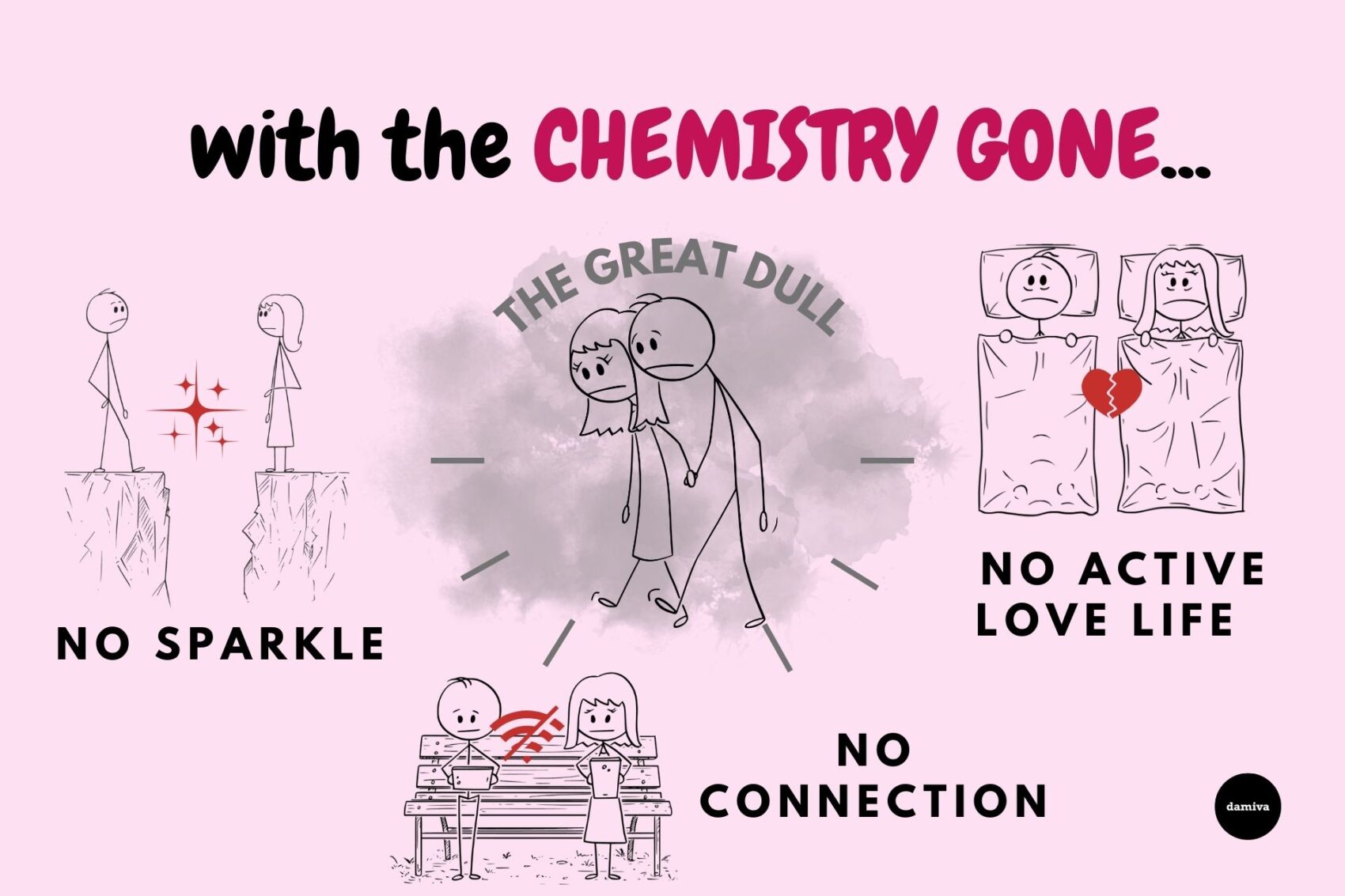Defining Pheromones
Pheromones are chemical substances produced and released into the environment by an animal, affecting the behavior or physiology of others of its species. In humans, these biochemical signals are often associated with attraction and can influence social and sexual behavior. Pheromones are typically detected subconsciously, and although not fully understood, they play a role in communication that complements visual, auditory, and tactile stimuli.
Historical Perspective on Pheromone Research
The concept of pheromones was first introduced in the 1950s, with research initially focused on insects and animals. It wasn’t until the latter part of the 20th century that scientists began to explore the existence and function of pheromones in humans. Early studies were met with skepticism, but as methodologies improved, evidence began to mount supporting the role of pheromones in human behavior.
Pheromones and Sexual Attraction
Sexual attraction in humans is a complex process involving multiple senses, with pheromones acting as a silent player in the game of attraction. These chemical signals are thought to convey information about genetic compatibility, fertility, and current state of health, all of which are important factors in mate selection. Pheromones may also play a part in synchronizing menstrual cycles among women, known as the McClintock effect, and influencing overall sexual behavior.
The Impact of Menopause on Pheromone Production
Menopause marks a significant change in a woman’s life, not only hormonally but also in pheromone production and perception. As estrogen levels decline, the production of pheromones may also decrease, potentially altering a woman’s attractiveness to the opposite sex and affecting her own sensory perception. This shift can influence social dynamics and self-esteem, making the study of pheromones particularly relevant for post-menopausal women.







Dr. Winnifred Cutler’s Contributions to Pheromone Research
Biography and Career Milestones
Dr. Winnifred Cutler is a pioneering figure in the field of pheromone research, with a career marked by significant achievements and contributions to women’s health. Graduating cum laude with a B.S. in Psychology from Ursinus College in 1973, Dr. Cutler went on to earn her Ph.D. in Biology from the University of Pennsylvania in 1979. Her postdoctoral work at Stanford University in behavioral endocrinology laid the foundation for her groundbreaking studies. Dr. Cutler co-founded the Women’s Wellness Program at the Hospital of the University of Pennsylvania in 1985 and established the Athena Institute in 1986. She has published over 50 scientific papers, holds 5 patents, and is the author of eight books translated into seven languages, including Love Cycles: The Science of Intimacy and Hormones and Your Health: The Smart Woman’s Guide to Hormonal and Alternative Therapies for Menopause.
Isolation and Identification of Human Pheromones
In the mid-1980s, Dr. Cutler’s research led to the co-discovery of human pheromones, a finding that received significant attention in major publications such as Time, Newsweek, and the Washington Post. Her studies demonstrated the existence of pheromones in humans and their role in affecting menstrual cycles and reproductive health. This discovery was a monumental step in understanding the chemical communication between humans and its impact on relationships and physical well-being.
Significance of Dr. Cutler’s Findings
The implications of Dr. Cutler’s pheromone research are profound. Her work has not only advanced our understanding of human biology and behavior but has also led to practical applications. Dr. Cutler developed pheromone cosmetic fragrance additives, Athena Pheromone 10:13™ for women and Athena Pheromone 10X™ for men, which have been shown to increase sexual attractiveness through double-blind, placebo-controlled studies. These products embody the translation of scientific discovery into applications that can enhance interpersonal connections and quality of life.
Furthermore, Dr. Cutler’s research has opened new avenues for exploring the role of pheromones in health and disease, potentially leading to novel therapeutic strategies for conditions related to reproductive health and beyond. Her dedication to women’s wellness and her innovative approach to integrating research with clinical practice continue to inspire and influence the field of endocrinology and behavioral science.
The Science Behind Pheromones and Attraction
Mechanisms of Pheromone Action
Pheromones are chemical signals secreted by an individual and detected by another individual of the same species, leading to some sort of innate behavioral response. These chemical messengers are often associated with attraction and reproductive signaling. The mechanism of action for pheromones begins with their release into the environment, after which they are inhaled and come into contact with the vomeronasal organ (VNO) or olfactory epithelium in the nose. The VNO is thought to be a specialized part of the olfactory system in some animals, although its role in humans is still debated. Once pheromones bind to receptors, they trigger a signal that is transmitted to the brain, particularly the hypothalamus, which is involved in many instinctual behaviors, including sexual response.
Pheromones and Genetic Diversity
Research suggests that pheromones play a role in genetic diversity by guiding individuals towards potential partners with dissimilar genetic makeups. This is beneficial for the species as it leads to offspring with a greater genetic diversity, which can improve the robustness of the population. The famous “T-shirt study” demonstrated that women preferred the scent of men whose immune system genes (major histocompatibility complex, MHC) were different from their own. This preference for genetic dissimilarity is believed to be mediated by pheromones, which carry information about an individual’s genetic makeup.
Pheromones Across Different Stages of Life
The production and response to pheromones can vary across different stages of life. For instance, it is well-documented that fertile women release more pheromones than postmenopausal women. This is because pheromone production is closely linked with reproductive hormones, which fluctuate throughout a woman’s life. During menopause, the decrease in estrogen and other hormones results in a reduction of pheromone production. However, studies have shown that the application of synthetic pheromones, such as Dr. Winnifred Cutler’s Athena Pheromone 10:13, can increase the sexual attractiveness of postmenopausal women to men, suggesting that while natural production may wane, the response to pheromones remains active.
In conclusion, the science behind pheromones and attraction is rooted in the biological mechanisms that facilitate chemical communication between individuals. Pheromones influence attraction and mate selection, contributing to genetic diversity and playing a role in reproductive health across the lifespan. As research progresses, our understanding of how pheromones affect human interaction continues to evolve, offering intriguing insights into the subtle forces that influence our social and sexual behaviors.
Clinical Studies and Evidence on Pheromones
Overview of Key Studies
The exploration of human pheromones and their influence on sexual attraction and behavior has been a subject of scientific inquiry for decades. Among the most significant contributors to this field is Dr. Winnifred Cutler, whose research has provided groundbreaking insights into the existence and function of human pheromones. Her studies, particularly those conducted in the 1980s, established the first scientific proof that human pheromones affect the relationship between men and women.
Methodologies and Results
Dr. Cutler’s research methodology often involved controlled clinical studies, where participants’ responses to pheromones were meticulously observed and recorded. For instance, one of her notable studies demonstrated that women who had regular sexual intercourse with men had more regular menstrual cycles compared to those who did not. This finding suggested the presence of a male pheromone that influenced female reproductive physiology. Further studies by Dr. Cutler and her colleagues isolated specific compounds from men’s underarm secretions that affected women’s menstrual cycles, indicating the action of pheromones.
Another significant aspect of Dr. Cutler’s work was the development and testing of pheromone products. These products were subjected to double-blind, placebo-controlled studies, which are considered the gold standard in clinical research. The results from these studies indicated that the pheromone products could indeed increase a person’s sexual attractiveness to the opposite sex, as reported by participants.
Critiques and Limitations of Pheromone Studies
Despite the promising results, pheromone research, including Dr. Cutler’s studies, has faced criticism and skepticism within the scientific community. One critique is the reproducibility of results, a cornerstone of scientific validity. Some researchers have struggled to replicate the findings of key pheromone studies, leading to questions about their generalizability. Additionally, the complexity of human behavior and attraction, influenced by a myriad of social, psychological, and environmental factors, makes it challenging to attribute such behaviors to pheromones alone.
Another limitation is the potential for bias in self-reported outcomes, which are commonly used in pheromone studies. Participants’ perceptions of their attractiveness or changes in behavior may be influenced by their beliefs about the product they are using, even under double-blind conditions. Furthermore, ethical considerations arise from the commercialization of pheromones, particularly regarding the claims made by manufacturers about the effects of pheromone products.
In conclusion, while Dr. Cutler’s research has contributed significantly to the understanding of human pheromones, ongoing scientific scrutiny and further research are necessary to fully comprehend the role of pheromones in human behavior and attraction.
Pheromones in Post-Menopausal Women
Changes in Pheromone Production After Menopause
Menopause marks a significant transition in a woman’s life, bringing about various physiological changes, including alterations in pheromone production. Dr. Winnifred Cutler’s research, as highlighted in Christiane Northrup’s “The Secret Pleasures of Menopause,” suggests that post-menopausal women secrete fewer pheromones compared to when they are ovulating. Pheromones, which are chemical signals secreted by the body, play a crucial role in sexual attraction and social communication. The decline in pheromone production after menopause could potentially impact a woman’s sexual attractiveness and social interactions.
Effects of Pheromone Use in Post-Menopausal Women
Despite the natural decline in pheromone production during menopause, Dr. Cutler’s research offers a beacon of hope. The introduction of synthetic pheromones, such as the product Athena Pheromone 10:13, can be mixed with a woman’s perfume to enhance her sexual attractiveness. This odorless additive has been shown to significantly increase attention from men, as evidenced by a double-blind, placebo-controlled study. The study reported that 74% of women using the product experienced an increase in sociosexual behavior, including petting, kissing, affection, and sexual intercourse. Moreover, married women using pheromones reported an increase in sexual intercourse, suggesting that pheromones can play a role in enhancing intimate relationships post-menopause.
Personal Accounts and Anecdotal Evidence
Anecdotal evidence further supports the positive effects of pheromone use in post-menopausal women. Personal accounts indicate not only an increase in attention from men but also an improvement in social interactions with other women. For instance, one woman reported that her co-workers became friendlier when she wore pheromone-laced perfume to work. Such accounts underscore the multifaceted benefits of pheromones, extending beyond sexual attraction to include broader social benefits.
In conclusion, the research conducted by Dr. Cutler and presented in “The Secret Pleasures of Menopause” sheds light on the significant role of pheromones in the lives of post-menopausal women. The decline in natural pheromone production can be counteracted with synthetic alternatives, leading to enhanced sexual desirability and improved social interactions. These findings open up new avenues for post-menopausal women to maintain and enhance their quality of life and relationships.

Feeling You Have a Right to Safe Beauty & Fem Care?
If so, it may be time for a change. It starts with knowledge. We have a few suggestions in our new guides.
Pheromones and Their Sociocultural Implications
Pheromones in the Workplace and Social Settings
The influence of pheromones extends beyond personal relationships and into broader social contexts, including the workplace. While the science of pheromones suggests a subconscious impact on human behavior, the extent to which these chemical signals affect professional interactions remains a subject of debate. In office settings, pheromones may subtly influence teamwork, leadership perception, and negotiation outcomes. However, the ethical implications of leveraging pheromones for professional gain are contentious, raising questions about the fairness and integrity of such practices.
Ethical Considerations of Pheromone Use
The commercial availability of pheromone-based products has sparked a discussion on the ethical dimensions of their use. Intentionally altering one’s pheromone profile to affect the behavior of others can be seen as a form of manipulation, potentially infringing on an individual’s autonomy. Moreover, the lack of public awareness about the effects of pheromones compounds the ethical dilemma, as individuals may be influenced without their consent or knowledge. This raises concerns about the informed consent in social and romantic encounters, where pheromone products might be used to sway another’s feelings or decisions.
Pheromones and Gender Dynamics
Gender dynamics are also influenced by the study and application of pheromones. Dr. Winnifred Cutler’s research has highlighted the role of pheromones in women’s health and sexual attraction, particularly in the context of menopause. The use of pheromone products may contribute to shifting societal perceptions of aging and sexuality, empowering post-menopausal women to embrace their sexual identity. However, it also opens up a dialogue on the societal pressures women face to maintain sexual desirability and the potential for pheromone products to reinforce gender stereotypes. The balance between enhancing personal well-being and perpetuating societal expectations is a delicate one that requires careful consideration.
In conclusion, the sociocultural implications of pheromones are multifaceted and complex. As research progresses, it is crucial to foster a public discourse that addresses the ethical, social, and gender-related aspects of pheromone use, ensuring that advancements in this field are aligned with societal values and individual rights.

Conclusion and Future Directions in Pheromone Research
The exploration of pheromones and their influence on human behavior, particularly in relation to menopause, has been a subject of increasing interest within the scientific community. Dr. Winnifred Cutler’s pioneering research has significantly contributed to our understanding of pheromones and their potential effects on sexual attraction and overall well-being in post-menopausal women. Her work has identified key pheromones that play a role in human attraction and has highlighted the impact of menopause on pheromone production and perception.
Potential for Future Applications
The implications of pheromone research extend beyond academic curiosity, presenting potential applications in therapeutic treatments, personal care products, and social interaction enhancers. The identification of pheromones that can improve the quality of life for post-menopausal women opens up possibilities for developing pheromone-based treatments to alleviate symptoms associated with menopause. Furthermore, the commercialization of pheromones in perfumes and colognes could revolutionize the personal care industry by offering products that enhance one’s natural attractiveness. Additionally, understanding the role of pheromones in social dynamics may lead to novel approaches in improving social connectivity and interpersonal relationships.
Closing Thoughts on Pheromones and Human Interaction
As research progresses, it is becoming increasingly clear that pheromones play a significant role in human interaction. Dr. Cutler’s research in “The Secret Pleasures of Menopause” has shed light on the complex interplay between pheromones, menopause, and sexual attraction. While the current knowledge base provides a solid foundation, it is evident that much remains to be discovered. Future research should focus on elucidating the precise mechanisms by which pheromones influence human behavior, the potential for individual variability in pheromone production and response, and the ethical considerations surrounding the manipulation of pheromones in society. As we continue to unravel the mysteries of pheromones, we must remain mindful of the profound impact these chemical messengers have on our social and emotional lives.



















